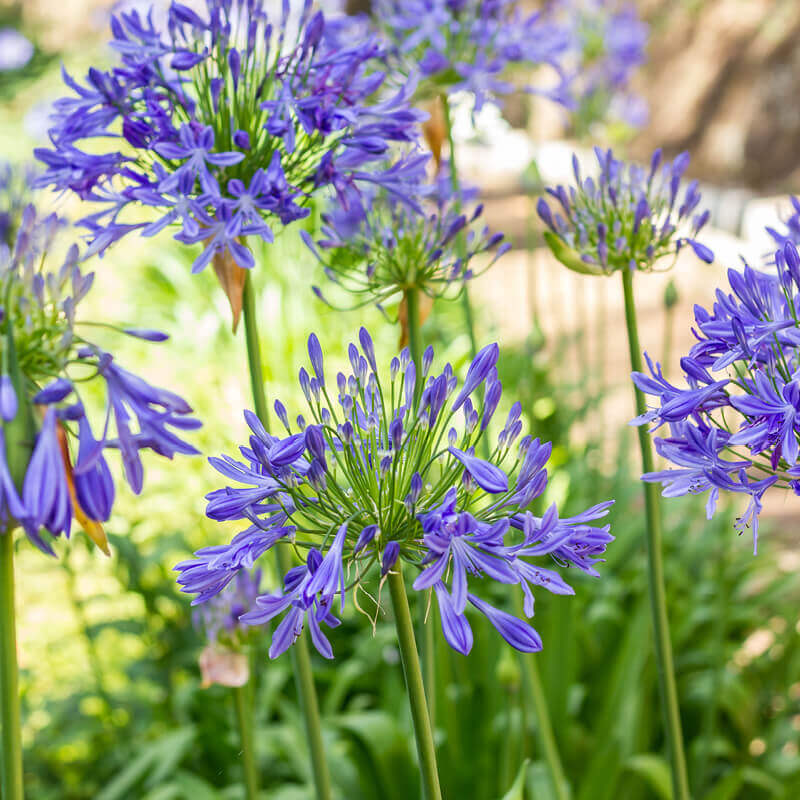Mastering the Art of Agapanthus Care: Crucial Steps for Healthy Growth and Vibrant Blooms
In the realm of horticulture, the growing of agapanthus stands as a gratifying venture for those who seek to nurture these stylish flowering plants. With their striking blooms and stylish foliage, agapanthus has caught the interest of garden enthusiasts worldwide. However, attaining ideal growth and lively blossoms needs a nuanced approach that includes different vital actions. From picking the appropriate selection to understanding trimming methods, the trip in the direction of cultivating flourishing agapanthus plants is multifaceted and holds the key to unlocking the complete possibility of these botanical treasures.

Choosing the Right Agapanthus Variety

When selecting the ideal Agapanthus selection for your garden, take into consideration aspects such as environment viability, flower color, and growth habit. In addition, think about the environment in your region to make sure the Agapanthus selection you choose can prosper in your specific problems. Recognizing the development behavior of different Agapanthus selections is crucial for appropriate placement within your yard.
Ideal Planting Problems
Taking into consideration the optimal ecological demands is essential for successful Agapanthus cultivation. Agapanthus plants are delicate to cool temperatures and must be secured from frost during winter months.
To make certain healthy and balanced development and vivid blooms, plant Agapanthus light bulbs at a deepness of concerning 2-4 inches and room them 8-12 inches apart. Adding natural matter, such as garden compost, to the soil can improve drain and fertility, advertising robust root advancement. Mulching around the base of the plants aids preserve moisture and suppresses weed growth. Normal watering is important, specifically during the growing period, to keep the soil regularly wet yet not waterlogged.
Watering and Feeding Tips
Preserving correct dampness degrees and offering important nutrients are essential components in the treatment program for Agapanthus plants. When it comes to watering Agapanthus, it is essential to strike an equilibrium. These plants like constantly wet dirt yet are vulnerable to root rot if overwatered.
Fertilizing Agapanthus is crucial for promoting healthy and balanced development and prolific flowers. Use a well balanced fertilizer, such as a 10-10-10 formula, in the early spring as new growth emerges. By following these watering and fertilizing ideas, you can ensure your Agapanthus plants grow and generate dynamic, lasting blooms.
Trimming Methods for Agapanthus
Pruning Agapanthus plants at the proper times and with proper methods is essential for keeping their wellness and advertising optimum development and flowering. The suitable time to trim Agapanthus is in late winter months or very early springtime prior to new development emerges. Start by eliminating any kind of dead or yellowing fallen leaves near the base of the plant. Cut them as short as possible without harming the arising shoots.
For flowered stems, wait until the blooms have withered and after that cut them back to the base. This not only cleans up the plant's appearance but likewise encourages the growth of new blossom buds. Deadheading spent blossoms can likewise redirect the plant's energy into creating even more blossoms as opposed to establishing seeds. However, if you wish wikipedia reference to accumulate seeds for proliferation, leave some blossoms to completely dry and fully grown on the plant.
Keep in mind to utilize tidy, sharp devices to make specific cuts and lower the threat of presenting diseases. Agapanthus. Regular trimming will help keep your Agapanthus looking cool and healthy and balanced while ensuring an abundant display screen of attractive flowers
Taking Care Of Common Parasites and Diseases
After making sure correct pruning strategies for Agapanthus, it is necessary to address typical insects and diseases that can affect the health and vitality of these plants. Agapanthus plants are typically sturdy yet can still succumb certain concerns. One typical insect that influences Agapanthus is the Agapanthus gall midget. This small, orange fly lays its eggs in the vegetation, leading to distorted growth and blossom buds that stop working to open. To battle this pest, trim and damage any afflicted plant components and consider using insecticidal soap.
One more usual concern is fungal fallen leave area, which presents as dark sores on the leaves. To avoid fungal illness, make sure good air circulation around the plants, avoid above watering, and eliminate any type of infected fallen leaves quickly. Additionally, Agapanthus plants can deal with root rot if they are planted in poorly draining pipes dirt. To prevent this, plant Agapanthus in well-draining soil and stay clear of overwatering. By being alert and taking timely activity against illness and parasites, you can assist your Agapanthus plants prosper and generate vivid blooms.

Conclusion
Finally, grasping the art of agapanthus care involves picking the appropriate range, giving excellent growing conditions, appropriate watering and fertilizing, suitable pruning methods, and attending to usual pests and illness. By following these vital steps, you can guarantee healthy development and dynamic flowers for your agapanthus plants. Bear in mind to frequently keep an eye on and keep your visit this page plants to promote their total well-being and longevity.
To ensure healthy development and vivid blossoms, plant Agapanthus light bulbs at a depth of regarding 2-4 inches and space them 8-12 inches apart. By following these watering and fertilizing pointers, you can guarantee your Agapanthus plants grow and generate dynamic, durable blossoms.
One typical pest that influences Agapanthus is the Agapanthus gall midget. Furthermore, Agapanthus plants can suffer top article from origin rot if they are planted in inadequately draining pipes dirt. By following these necessary steps, you can make sure healthy growth and lively blooms for your agapanthus plants.
Comments on “Agapanthus Proliferation: Tips for Expanding Your Plant Collection”